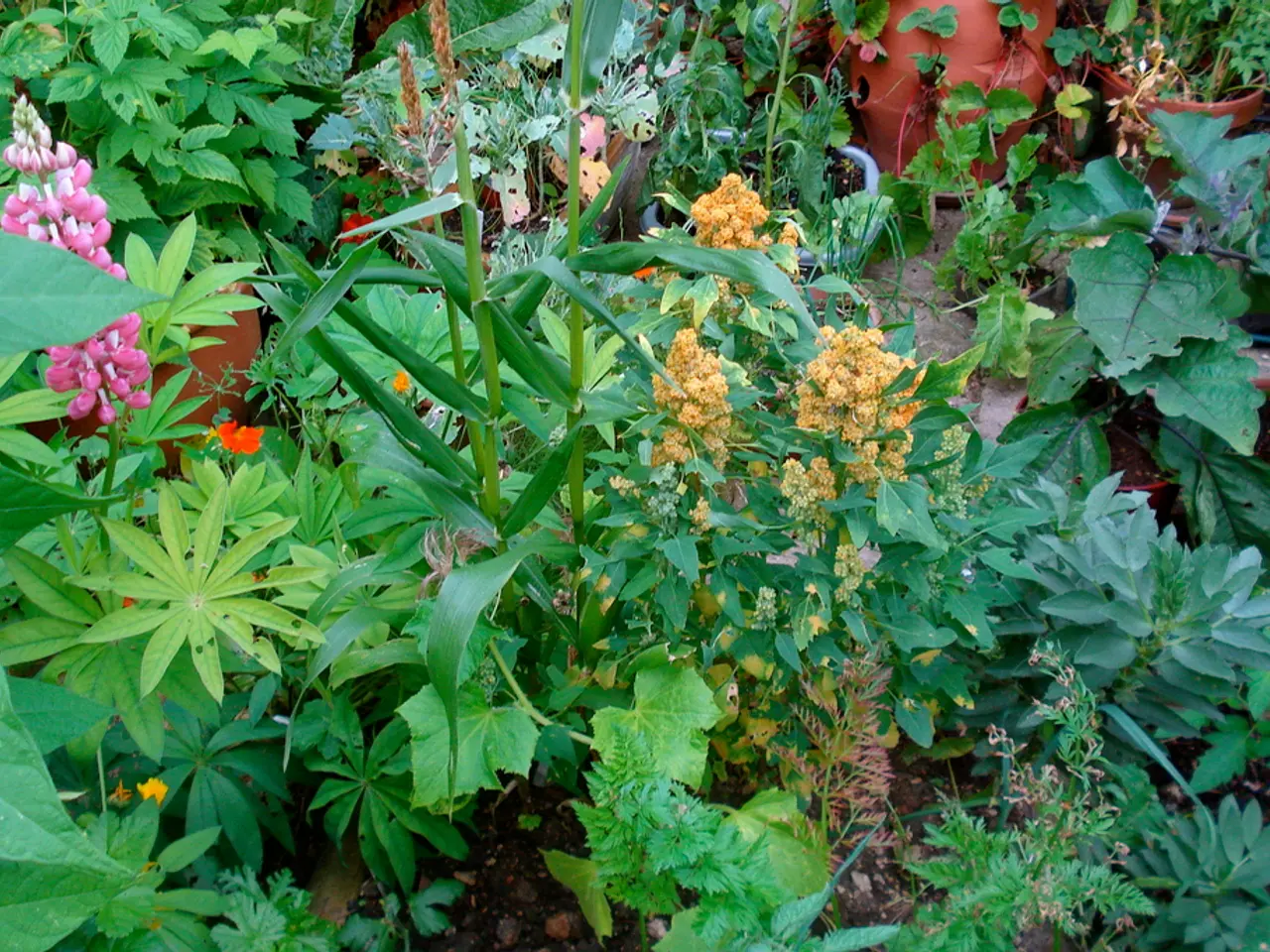Simplifying Container Gardening: Essential Knowledge for Thriving Container Plants
================================================
Starting a container garden is an accessible and rewarding way to grow plants, even for those with limited space or challenging soil conditions. Here's a step-by-step guide to help you get started:
Choosing the Container
- Size Matters: Select a container that is large enough to accommodate the root system of the plants you want to grow. For example, herbs and leafy greens can thrive in containers 25-40 cm wide, while tomatoes and larger plants require bigger pots.
- Drainage: Ensure the container has good drainage. If it doesn't have holes, consider drilling some or adding materials like pebbles or clay balls to prevent waterlogged soil.
Selecting Soil
- Use Potting Mix: Always use a lightweight, well-draining potting mix specifically designed for container gardening. This mix should contain ingredients like perlite or vermiculite to ensure good drainage and prevent root rot.
- Avoid Garden Soil: Do not use garden soil or topsoil, as they are too heavy and can suffocate the roots of your plants.
Choosing Plants
- Consider Plant Needs: Choose plants that have similar water and light requirements, especially if you're planting multiple species in the same container.
- Diversity in Planting: Combine plants with different shapes and textures, such as thrills (central plants), fillers (mounding plants), and spillers (trailing plants).
Planting and Care
- Prepare the Soil: Moisten the potting mix before planting to ensure it's easier to handle and plant the roots.
- Plant Properly: Dig a hole twice the size of the plant's root ball, gently press the soil around the roots, and avoid packing it too tightly.
- Water Thoroughly: Water the plant slowly and thoroughly after planting to settle the soil around the roots.
- Ongoing Care: Water when the top 1-2 inches of soil feel dry. Use a slow-release fertilizer throughout the season for optimal growth.
Additional Tips
- Space and potting soil are limited in a container, which makes water and nutrients also limited for container plants.
- The more sun, heat, or wind the plants experience, the more water they need.
- Container gardens are beneficial for those with rocky, sandy, muddy, or highly acidic soil.
- Any nutrients in potting soil will leach out relatively quickly as you water frequently, requiring regular fertilization.
- Reducing watering when the weather is wetter to prevent waterlogging and fungal issues.
- Container gardening can resolve various gardening problems, such as poor soil, being a beginner, mole infestations, and the need for occasional plant relocation.
- Container gardens are possible in small spaces like balconies, patios, or fire escapes.
- Container gardening can be easier than ground-based growing, with the potential for creativity in growing veggies and flowers in the same containers.
- Hot weather container plants and shade-based options can be grown in container gardens.
Happy gardening!
Maintaining a container garden can transform your home-and-garden lifestyle, as it offers a convenient and fulfilling method of gardening for individuals with limited space or challenging soil conditions. Using the guide provided, you can start growing diverse plants such as leafy greens, herbs, tomatoes, and more, by selecting suitable containers, proper soil, and plants with similar care requirements.




